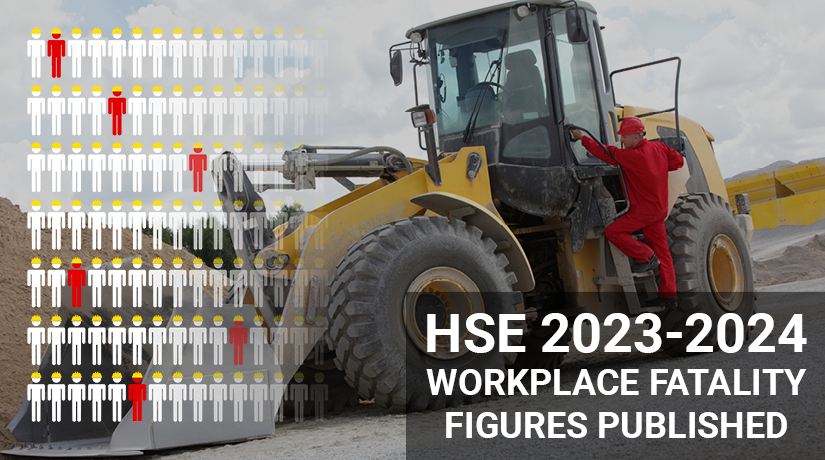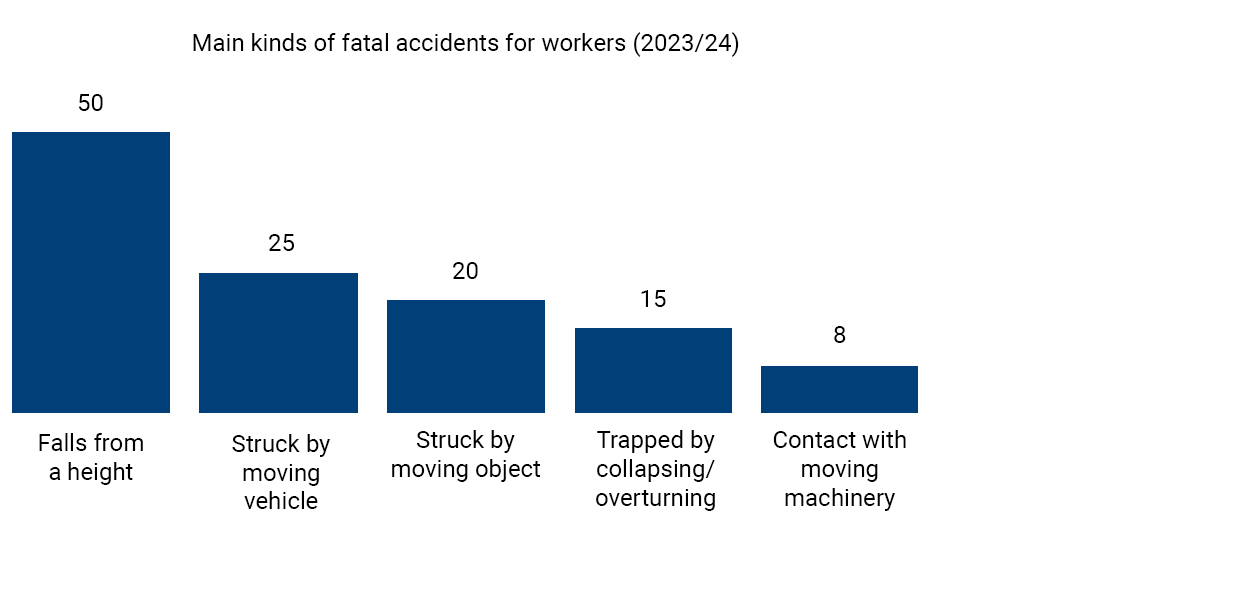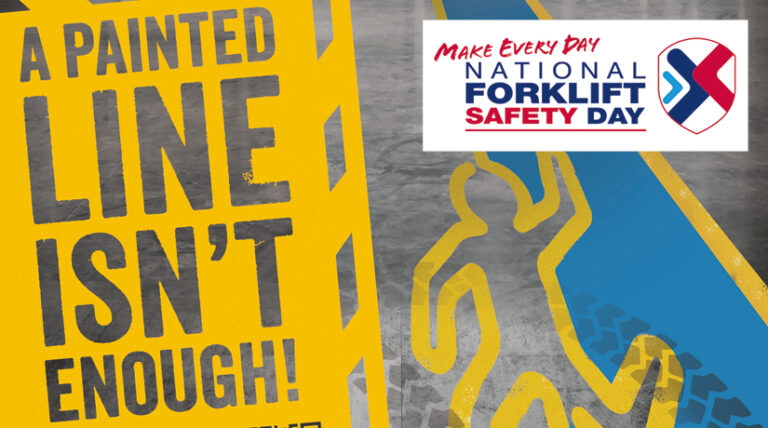The Health and Safety Executive (HSE) has just released its annual figures for HSE workplace fatalities and injuries 2023/34, revealing a slight increase from the previous year’s data. The workplace fatality figures are currently provisional and will be finalised in July 2025 to account for any necessary adjustments.
Sadly, this year’s workplace fatality figures continue a trend of an overall year-on-year increase in workplace fatalities. A total of 138 workers lost their lives due to work-related accidents in 2023/24, an increase of two from last year’s figures (136).
Falls from a height, being struck by a moving vehicle, and being struck by a moving object continue to be the three most common causes of fatal accidents, accounting for around two-thirds of workplace fatalities. By sector, construction and agriculture, forestry and fishing account for just over half of all fatal injuries in 2023/24.
HSE Workplace Fatalities and Injuries
- A total of 138 workers were killed in work-related accidents in Great Britain in 2023/24, an increase of 2 fatalities from 2022/23
- Around two-thirds (65%) of fatal injuries in 2023/24 occurred in three industry sectors: construction, agriculture, forestry and fishing and manufacturing.
- Struck by a moving vehicle is one of the most common causes of fatal accidents, accounting for 25 fatal injuries to workers in 2023/24 and representing 18% of the total number of deaths over the year.
- Falls from height, being struck by a moving vehicle, and being struck by moving objects remain the top three causes of fatal injuries, accounting for over half of all fatal accidents.
- Agriculture, forestry, and fishing have a fatal injury rate 21 times higher than the average across all industries. In 2023/24, there were 23 fatal injuries, an increase of 2 from the previous year’s total (21).
- The manufacturing sector saw 16 fatal injuries in 2023/24, an increase of 1 from the previous year’s total (15).
- The waste and recycling sector also has a significantly elevated fatal injury rate, nine times higher than the average.
- The construction industry’s fatal injury rate is about five times higher than the average across all industries. The number of fatalities in the sector in 2023/24 was 51, an increase of 4 from the previous year (47).
- Fatal injuries to workers are predominately to males. In 2023/24, 131 (95%) of all worker fatalities were to male workers and 34% to workers aged 60 and over, even though such workers made up only 11% of the workforce.
Waste and Recycling
The waste and recycling sector recorded four fatal accidents in the newly released figures, down two from 2022/23 data. This decline is promising but shows more still needs to be done, and the occurrence of any workplace fatality underscores the ongoing risks associated with this industry. HSE workplace fatalities in 2019/20 amounted to five, with 30% due to contact with moving machinery and another 30% from collisions with moving vehicles.
The HSE has long recognised the hazards within the waste sector and recorded HSE workplace fatalities and injuries. In 2021, a safety notice was issued concerning the use of wheeled shovel loaders following nine fatal accidents over the course of four years, six of which occurred within waste and recycling.
The Importance of Continued Safety Measures
It is crucial to consistently focus on reducing fatal accidents in high-risk industries. The most effective way to address safety risks is to employ a multi-layered approach. The combination of robust training, risk assessment, equipment maintenance, stringent procedures, and strict adherence to safety protocols is essential to mitigating risks.
Additional measures, including advanced safety technology, complement these efforts further. Commonly used workplace transport vehicles, such as wheeled shovel loaders, excavators, HGVs, and forklifts, pose significant dangers to workers. By implementing comprehensive accident prevention measures, it is possible to successfully reduce the chance of accidents and protect workers and members of the public.
How ZoneSafe Can Help
ZoneSafe’s Proximity Detection System offers a robust and reliable solution that effectively minimises the risk of vehicle-pedestrian collisions. Through real-time alerts, ZoneSafe ensures accidents are significantly reduced, and workers are protected from harm. The solution supports workplace safety initiatives and helps create and maintain a downward trend in severe and fatal workplace accidents. Read our Case Studies.
ZoneSafe works with companies across a range of high-risk sectors, including construction, manufacturing, and waste and recycling, to support their health and safety goals of ‘zero harm.’ The application of ZoneSafe helps to manage the plant-people interface, providing a safer environment for workers and visitors. The ZoneSafe mission is simple: significantly reducing serious and fatal workplace accidents.
Contact ZoneSafe to discuss your workplace safety concerns and learn how we can help protect your workers https://zonesafe.com/contact-us/.





